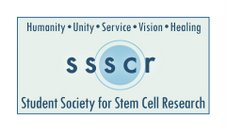Eye Cell Implants Improve Parkinson's Symptoms
By Serena Gordon, HealthDay Reporter
MONDAY, April 28 (HealthDay News) -- By implanting specialized cells
found in the human eye into areas of the brain damaged by Parkinson's
disease, researchers were able to reduce symptoms and improve quality
of life in people with moderate to severe Parkinson's.
The new treatment, dubbed Spheramine, reduced symptoms experienced
when people were off their Parkinson's medications by 44 percent for
as long as four years of follow-up. Quality-of-life measurements were
up about 23 percent, according to the study, expected to be presented
April 29 at the American Association of Neurological Surgeons' annual
meeting, in Chicago.
"This is a promising study on a form of therapy that is different
from anything out there," said the study's lead author, Dr. Roy
Bakay, a professor of neurological surgery and the A. Watson and
Sarah Armour Presidential Chair at Rush University Medical Center in
Chicago.
"This therapy may be beneficial in itself, or it may be used as
additional therapy," added Bakay, who was at Emory University in
Atlanta at the time of the study.
Spheramine is made from cells called human retinal pigment epithelial
cells (hRPE) that are found naturally in the human eye. By combining
these cells with microscopic gelatin beads called microcarrier
support matrix (MSM), the Emory researchers were able to produce
Spheramine, a targeted therapy for Parkinson's. Spheramine can be
implanted in the brain, where the eye cells naturally begin to
produce levodopa. The researchers believe the levodopa is then turned
into dopamine, a neurotransmitter lacking in people with Parkinson's.
"Spheramine is not stem cells. There's no requirement for
immunosuppression, and these cells are easily harvested from eye
banks and are readily available," Bakay said.
The new study included six patients with moderate to severe
Parkinson's disease, a progressive brain disorder that causes tremors
and other motor difficulties that worsen as the disease advances.
Parkinson's affects as many 1.5 million Americans, according to
background information in the study.
There are few effective treatments for Parkinson's, and those that do
work often have unpleasant side effects and may stop working over
time.
Patients selected for the study were chosen based on their
responsiveness to levodopa and the severity of their symptoms when
they were off their medication. Using MRI-guided stereotactic
surgery, the researchers implanted Spheramine into areas of the
volunteers' brains that appeared to be most affected by Parkinson's.
After 12 months, there was a 48 percent improvement in symptoms. At
48 months, that number had dropped to 44 percent, but Bakay said the
researchers were pleased that the treatment maintained effectiveness
for that long.
The only significant side effect seen in this small study was a
transient headache, he said.
Dr. Bruce Silverman, a neurologist at Providence Hospital and Medical
Center in Southfield, Mich., said the new study "showed that there
was clinical improvement over a sustained period of time. The study
was based on small numbers, but it shows some promise."
He added that the study needs to replicated with a larger group of
patients.
Bakay said the researchers have recently completed a larger, double-
blind study, and results of that trial should be available by the end
of this year or early 2009.
More information
To learn more about treatments available for Parkinson's disease,
visit the National Parkinson Foundation.
SOURCES: Roy Bakay, M.D., professor, neurological surgery, and the A.
Watson and Sarah Armour Presidential Chair, Rush University Medical
Center, Chicago; Bruce Silverman, D.O., neurologist, Providence
Hospital and Medical Center, Southfield, Mich.; April 29, 2008,
presentation, American Association of Neurological Surgeons' annual
meeting, Chicago
http://www.wtnzfox4
«¤»¥«¤»§«¤»¥«¤»§«¤»¥«¤»«¤»¥«¤»§«¤»¥«¤»§«¤»¥«
¯¯¯¯¯¯¯¯¯¯¯¯¯¯¯¯¯¯¯¯¯¯¯¯¯¯¯¯¯¯¯¯¯¯¯¯¯¯¯¯¯¯¯¯
StemCells subscribers may also be interested in these sites:
Children's Neurobiological Solutions
http://www.CNSfoundation.org/
Cord Blood Registry
http://www.CordBlood.com/at.cgi?a=150123
The CNS Healing Group
http://groups.yahoo.com/group/CNS_Healing
____________________________________________
«¤»¥«¤»§«¤»¥«¤»§«¤»¥«¤»«¤»¥«¤»§«¤»¥«¤»§«¤»¥«
¯¯¯¯¯¯¯¯¯¯¯¯¯¯¯¯¯¯¯¯¯¯¯¯¯¯¯¯¯¯¯¯¯¯¯¯¯¯¯¯¯¯¯¯
Change settings via the Web (Yahoo! ID required)
Change settings via email: Switch delivery to Daily Digest | Switch format to Traditional
Visit Your Group | Yahoo! Groups Terms of Use | Unsubscribe
__,_._,___










